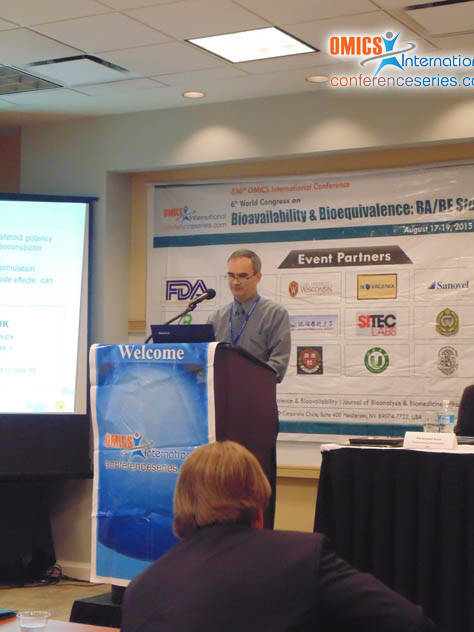
Keith Gallicano
Novum Pharmaceutical Research Services, USA
Title: Bioequivalence of topical corticosteroids: Design and data analysis challenges with the vasoconstrictor assay
Biography
Biography: Keith Gallicano
Abstract
The vasoconstrictor assay (VCA) method published in FDA’s 1995 Guidance on bioequivalence of topical dermatologic corticosteroids is currently the only pharmacodynamic method approved by FDA for demonstrating bioequivalence of topical corticosteroid products (gels, creams, lotions, ointments, foams, tapes and sprays). The Guidance recommends a pilot dose duration-response study to determine the appropriate dose duration for use in the pivotal study. In general, evaluation of bioequivalence by the VCA method has worked well over the last 20 years, but there remain several challenges in design and data analysis. For example, for the dose-response study the fit of the simple Emax model is not always optimal with low potency products, with products that show delayed vasoconstrictor (skin blanching) response, or with subjects that have low skin blanching (low Emax); for the pivotal study a too short or very long ED50 duration products can pose operational challenges. Furthermore, the sample size recommendation in the Guidance of 40-60 qualifiers for pivotal studies may be too low for those products that show high intra-subject variability in vasoconstrictor response. Successful bioequivalence studies depend on the clinic’s ability to recruit a fair-skinned population of subjects that show high and consistent skin blanching to even low potency topical steroids so that within-subject variability in vasoconstrictor response is minimized. This presentation will discuss approaches for minimizing operational issues, estimating sample size, and evaluating reliability of blanching profiles for pivotal studies and will provide examples of design and data analysis challenges for dose-response and pivotal studies.
Speaker Presentations
Speaker PDFs
Speaker PPTs Click Here

